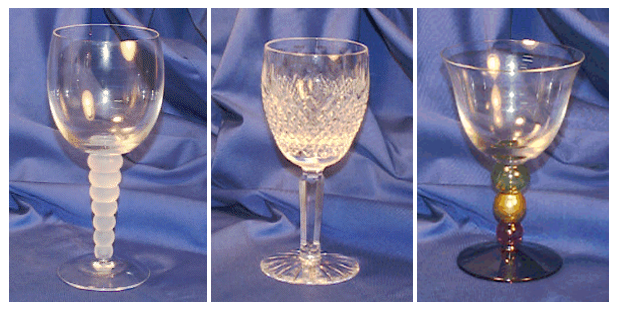The Wine Glasses
The Wine Glass Chats (gallery)
The Wine Glass Chats – Not so much an exercise – as an example to get some practical experience of how a real Totemic conversation proceeds. An aspect that sits at the core of Totemics and that you should experience if you follow the guidelines, is this: Rapid solutions/ conclusions do not occur, they cannot happen! A good outcome is to reach the stage of having confidently identified a terrain that is ripe and ready for exploration, and with an understanding of what must be brought on board to explore thoroughly. The Totemic stage helps to circumvent the trap of assumptions whereby it is “just a version”. “just a next step”. “that we already have the necessary expertise”
Of course the wine glass chats share some basic similarities with the three paintings and the chairs exercise. But the conversations with the paintings are to a great extent influenced by the two pre-set questions, and in the Chairs exercise, though it is a step on from the paintings – is still more of a process to follow.
With the wine glass chats, though there is the raw material that will go to make the visual metaphor, the meaning it is to carry has to come from the context you or a team determine.



(gallery)
It is useful to remind ourselves that the word metaphor comes from the Greek word metaphoros; meaning to transport or perhaps for our purposes here – to be a vehicle for something. The wine glasses are to be a vehicle which does the job of carrying and exploring a context.
When meaning is carried in a metaphor, the lack of any detail can just feel more OK. The conventions surrounding metaphor can be particularly helpful for development work and scientific enquiry where new angles or maybe challenges to accepted wisdom are necessarily short on detail. A classic example of a metaphor in science came from the early descriptions on the behaviour of atoms as, “bumping into one another”. I believe it enabled lots of talk over and about, the how, why and what of the “bumping” until sufficient knowledge had accrued to make the metaphor obsolete.
My original set of wine glasses saw duty in many kinds of collaborative metaphorical conversations and in all sorts of industries and places; on Landrovers and Sportscars, on Hi Fi Systems, College Buildings and even on Annual Appraisal Systems. Why wine glasses? Simply because wine glasses have individual characters and attributes and they are brand free – all of which makes them good metaphor vehicles.
What follows is a context that can be used as practice, if you are able to gather together five non digital wine glasses with very different styles and characters all well and good. If this will prove tricky, then use the digital images that are here on the website.



(gallery)
The Context
The imaginary context is to consider issues of safety that surround the lack of engine noise in electric powered vehicles. A think tank with a track record on innovative work, known for their capacity to open out and challenge conventional thinking has just begun to work on this initiative. Certainly, there is an expectation that they will go far further than the default option of introducing sound that mimics that of a combustion engine.
How you might begin to practice.
For starters, imagine that you are to join a diverse group of individuals for an initial and virtual meeting that will kick start this initiative. The meeting will of course have at the core an intent to create a Totemic conversation that scopes out a broad territory, that when viewed after the event has created a kind of world of possibilities for sounds and a moving vehicle. A successful outcome for this meeting will be to have selected a wine glass or two that act as a vehicle for a subsequent conversation that can begin to think further. Almost, the wine glasses act to hold back on a race to a solution! A “wine glass chat”, gets to some words and phrases but will remain strictly within the realms of metaphor.
Look as carefully as you can at the five wine glasses – note down no more than three to four words that come into your mind about each of the glasses. Writing on “Post it” notes is a useful way to do this. Next, I am assuming that you now have five post it notes! So the task is to think about how your descriptions for each wine glass would translate into descriptions of sounds for an electric engine. Be vocal and try them out if you dare please!



(gallery)
Then – order the post it notes – sometimes a form of cluster can be a good way to begin and taking a photo with your phone/tablet is an easy way to have a record of how your thoughts moved around.
If a couple of you have done this, then you can share your images and chat about differences and similarities.
If you are doing this alone – then begin to consider vehicle sounds for a single aspect – eg – group of children leaving the school gates – a mixed use car park, trucks/buses/private cars/cyclists/pedestrians – busy A road through woodland and moorland.



With your focus selected, consider the glasses afresh and mull over which of the five glasses has the most appropriate potential to be a good metaphor. Sometimes, there is a need to have two glasses to get a good balance. Attempt to order some words/phrases around the glasses so that you could communicate to others on the conclusions you have reached on the potential sounds/musicality for electric engines.
(gallery)
